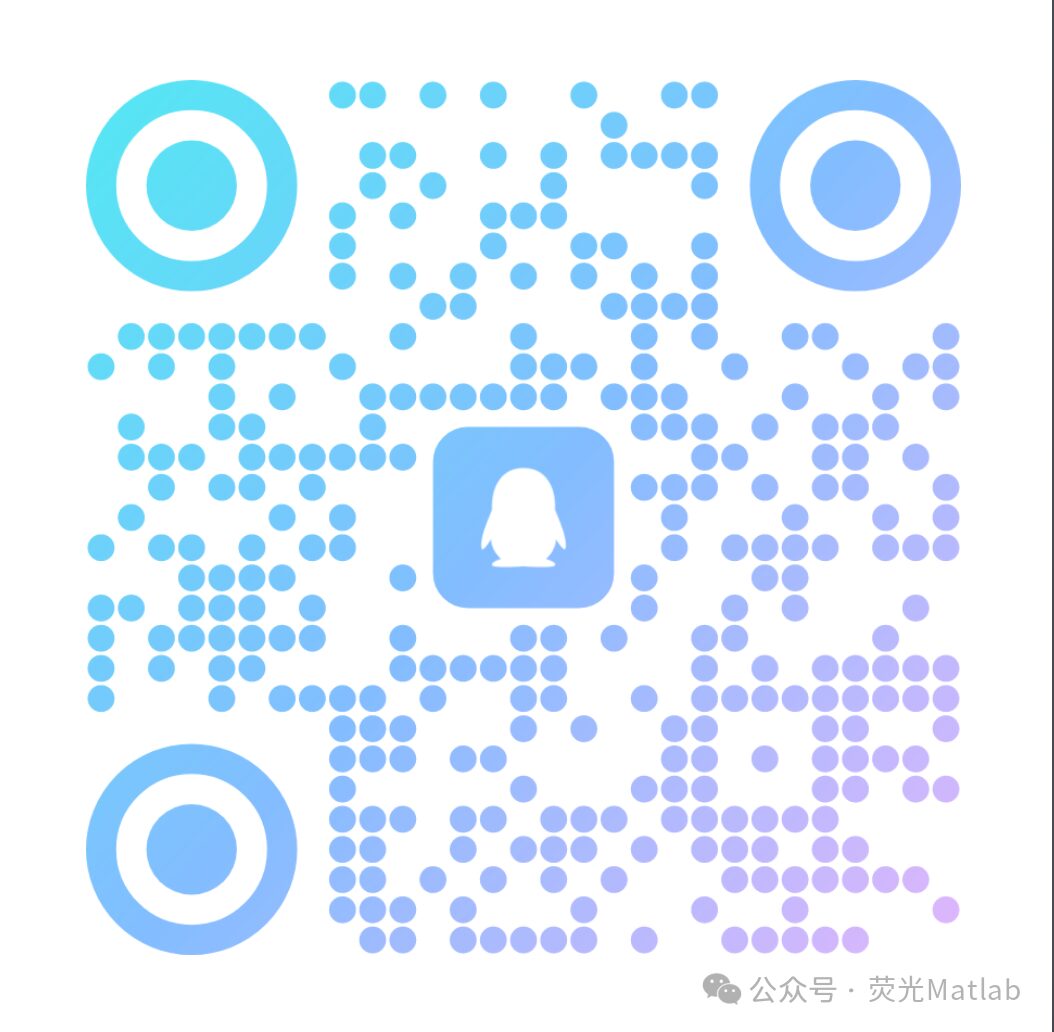TRAVEL
Click the blue text to follow us


Overview

License plate recognition technology plays a crucial role in modern intelligent transportation systems, security monitoring, and various vehicle management applications. It can automatically, quickly, and accurately extract license plate information from vehicle images or video streams, enabling intelligent identification of vehicle identities.
1
Technical Principles

License plate recognition mainly relies on the integration of multidisciplinary technologies such as image processing, pattern recognition, and computer vision. First, image acquisition is fundamental, utilizing high-definition cameras under suitable lighting and angle conditions to capture vehicle images containing license plates. Common scenarios include parking lot entrances and exits, highway toll stations, and urban road checkpoints. The captured images need to undergo a preprocessing stage, where grayscale processing converts color images to grayscale to simplify subsequent calculations, while filtering and denoising remove interference factors such as salt-and-pepper noise and Gaussian noise, enhancing image clarity; contrast enhancement operations are also performed to make the license plate area more prominent.
Next is the license plate localization step, which is one of the core steps. Various algorithms are used, such as edge detection methods that utilize operators like Sobel and Canny to detect edge information in images, combined with prior knowledge of the rectangular features of license plates and character arrangement patterns to locate the approximate position of the license plate in the image; there is also color feature-based localization, which uses specific color combinations of license plates (such as the common blue background with white characters, yellow background with black characters in China) to analyze and filter in color space, locking in the license plate area. Once localization is accurate, it proceeds to the character segmentation step, where characters on the license plate are segmented one by one based on characteristics such as the spacing between characters and stroke width, using vertical projection methods and connected component analysis, preparing for subsequent recognition. Finally, in the character recognition stage, methods such as template matching, artificial neural networks, and deep learning are used to compare the segmented characters with pre-stored character templates or learned character features, determining the specific character content on the license plate, thus completing the entire license plate recognition process.
2
Application Fields

Intelligent Traffic Management: In urban road traffic, electronic police systems at intersections use license plate recognition technology to capture evidence of traffic violations such as running red lights, speeding, and illegal lane changes. By recognizing license plate numbers, they quickly and accurately associate vehicle information, achieving off-site law enforcement and effectively regulating traffic order. At highway toll stations, license plate recognition supports the non-stop toll collection (ETC) system, allowing vehicles to pay without stopping to present cards, as the system automatically recognizes the license plate and deducts fees from the linked account, significantly improving traffic efficiency and alleviating congestion.
Parking Lot Management: Whether in commercial centers, residential communities, or office parking lots, license plate recognition systems enable automatic management of vehicle entry and exit. When a vehicle enters, the system quickly recognizes the license plate and records the entry time; upon departure, it automatically calculates fees based on parking duration, eliminating the need for manual card issuance and verification, reducing labor costs, and enhancing user experience, while also allowing real-time monitoring of parking space usage to optimize resource allocation.
Security Monitoring: In security monitoring systems in enterprises, residential communities, and public places, license plate recognition is used for access control, allowing only authorized vehicles’ license plates to pass through, enhancing regional security. In criminal investigations, police can use license plate recognition information from road checkpoints and surveillance footage to track the movements of suspect vehicles, providing key clues for solving cases.
Vehicle Insurance and Rentals: Insurance companies verify the identity of accident vehicles through license plate recognition during auto insurance claims, quickly initiating the claims process. Car rental companies utilize license plate recognition systems for precise control over the entry and exit of rental vehicles, maintaining real-time awareness of vehicle status to ensure orderly rental operations.
3
Advantages and Challenges

Advantages:
Efficiency: It can complete license plate recognition in a very short time, suitable for fast traffic scenarios. For example, the average recognition time at highway toll stations can be controlled within a few tenths of a second, having minimal impact on normal vehicle flow.
Accuracy: With continuous technological advancements, especially with the application of deep learning algorithms, the accuracy of license plate recognition has significantly improved. In ideal conditions, the accuracy can reach over 99%, and even under complex lighting and partial occlusion conditions, a high recognition level can still be maintained.
High degree of automation: The entire process requires no human intervention, reducing human error, lowering labor costs, and allowing for 24-hour uninterrupted operation to meet application needs at different times.
Challenges:
Impact of Lighting Conditions: In extreme lighting environments such as direct sunlight (e.g., noon sun), backlighting, or low lighting (e.g., only dim streetlight illumination at night), license plate images may appear too bright, too dark, or reflective, making characters difficult to see and impacting recognition accuracy.
Partial Occlusion Issues: During vehicle travel, license plates may become dirty with mud or dust, or be partially obstructed by branches or advertisement stickers, making license plate localization and character recognition more challenging. Traditional methods often struggle with these situations.
Complex Background Interference: When vehicles are in complex background environments, such as near markets or construction sites, images may contain many elements similar in texture, color, or shape to license plates, which can mislead localization algorithms and increase the risk of misrecognition.
4
Development Trends

Deep Learning Optimization: Continuously improve deep learning model architectures and increase training data volume to make them more adaptable to license plate recognition in various complex environments, further improving accuracy and robustness. For example, using adversarial network techniques to enhance model generalization capabilities.
Multimodal Fusion: Combine data from other sensors such as lidar and millimeter-wave radar with visual image information for comprehensive perception of vehicles and surrounding environments. This not only recognizes license plates but also gathers more information such as the three-dimensional position and speed of vehicles, providing comprehensive data support for intelligent transportation.
Expansion of Mobile Applications: With the performance improvements of mobile devices such as smartphones and in-car terminals, the license plate recognition function can be migrated to mobile platforms, allowing traffic police and security personnel to conduct vehicle checks anytime and anywhere, expanding application scenarios and convenience.
Integration with the Internet of Things: License plate recognition systems are closely integrated with IoT technologies to achieve interconnectivity between vehicle information and transportation facilities, smart buildings, and other IoT devices, constructing a more intelligent and integrated urban traffic and security network, enhancing urban operational efficiency and management levels.
Operational Results

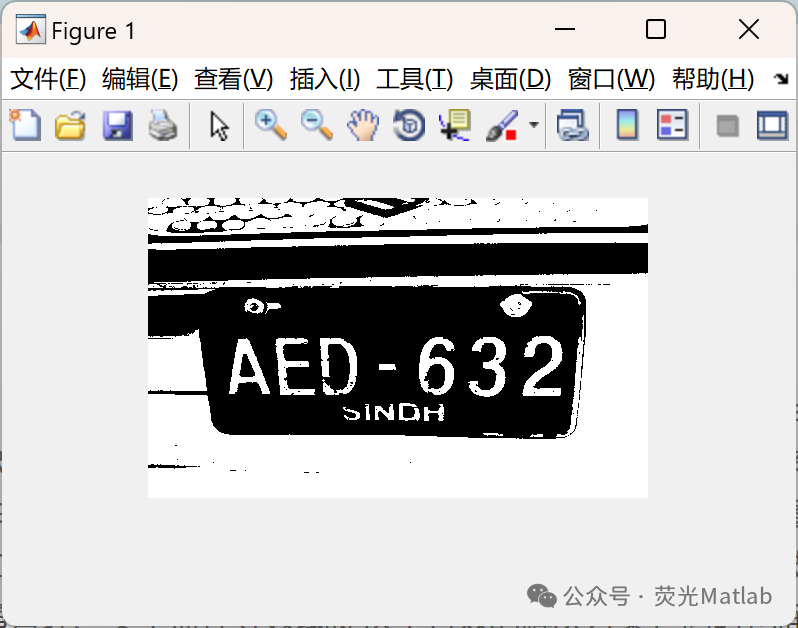
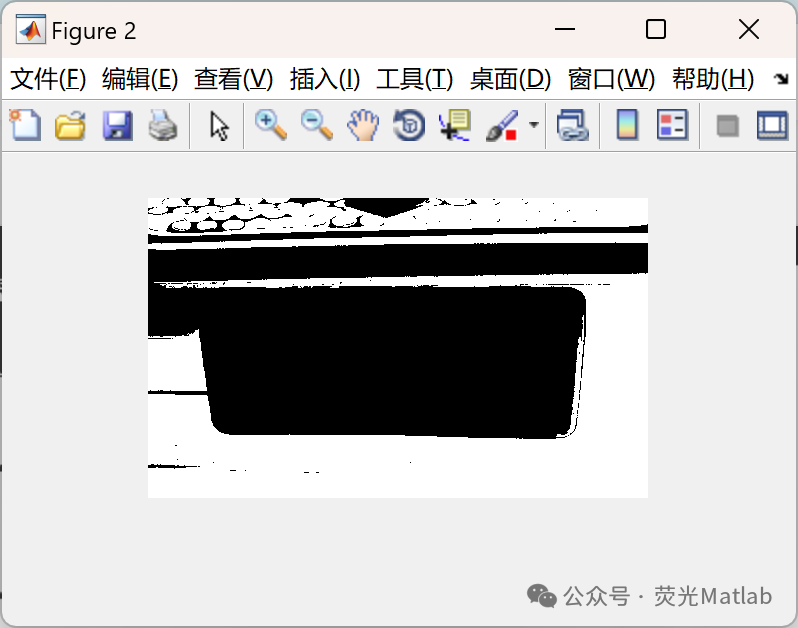
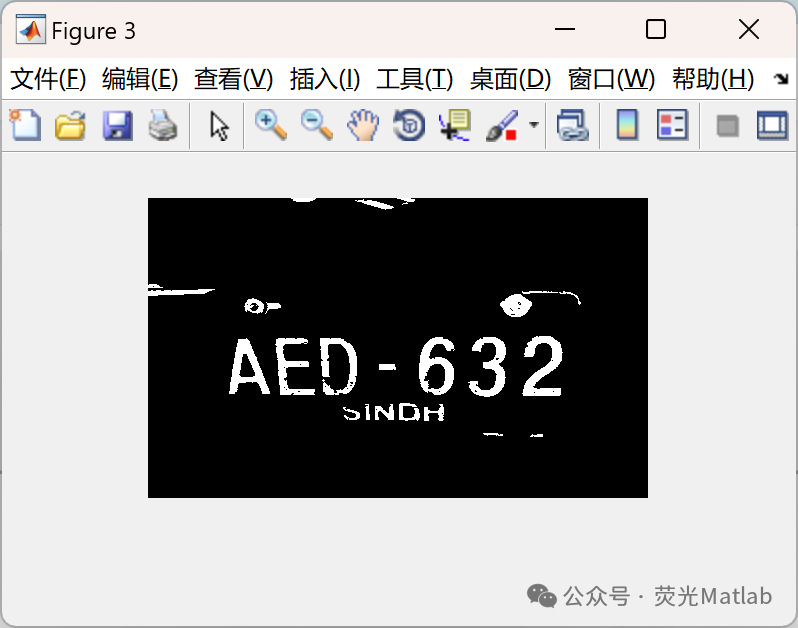
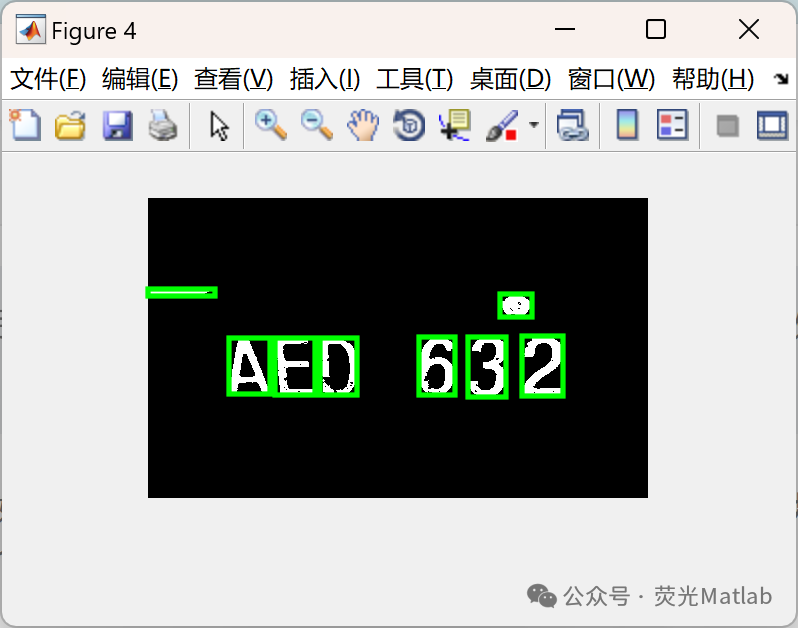



7
Main Function Code

clc
close all;
clear;
load imgfildata;
[file,path]=uigetfile({'*.jpg;*.bmp;*.png;*.tif'},'Choose an image');
s=[path,file];
picture=imread(s);
[~,cc]=size(picture);
picture=imresize(picture,[300 500]);
if size(picture,3)==3
picture=rgb2gray(picture);
end
% se=strel('rectangle',[5,5]);
% a=imerode(picture,se);
% figure,imshow(a);
% b=imdilate(a,se);
threshold = graythresh(picture);
picture =~im2bw(picture,threshold);
picture = bwareaopen(picture,30);
imshow(picture)
if cc>2000
picture1=bwareaopen(picture,3500);
else
picture1=bwareaopen(picture,3000);
end
figure,imshow(picture1)
picture2=picture-picture1;
figure,imshow(picture2)
picture2=bwareaopen(picture2,200);
figure,imshow(picture2)
[L,Ne]=bwlabel(picture2);
propied=regionprops(L,'BoundingBox');
hold on
pause(1)
for n=1:size(propied,1)
rectangle('Position',propied(n).BoundingBox,'EdgeColor','g','LineWidth',2)
end
hold off
figure
final_output=[];
t=[];
for n=1:Ne
[r,c] = find(L==n);
n1=picture(min(r):max(r),min(c):max(c));
n1=imresize(n1,[42,24]);
imshow(n1)
pause(0.2)
x=[ ];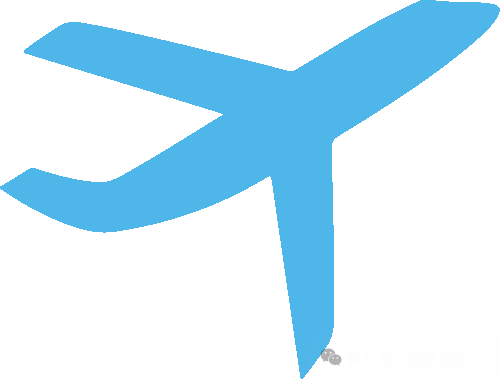
References

[1] Yang Yaqi, Feng Feng. Research and Application of License Plate Recognition Technology Based on RFID [J]. Internet of Things Technology, 2024, 14(04): 9-11. DOI: 10.16667/j.issn.2095-1302.2024.04.002.
[2] Qi Jiaxin, Zhang Zhihua, Fu Jinwei, et al. Research on License Plate Recognition Based on Convolutional Neural Networks [J]. Science and Technology Innovation and Productivity, 2024, 45(04): 121-124.
Some content in this article is sourced from the internet, and references will be noted or cited as references. If there are any inaccuracies, please feel free to contact us for removal.

